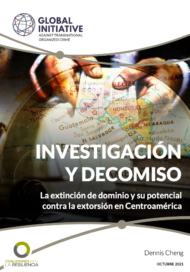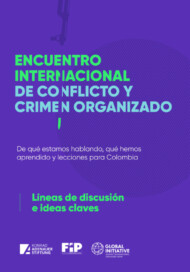Extortion has become an endemic problem in Central America. To provide a comprehensive response to this crime, the countries of the region have begun to make use of asset forfeiture, a tool that reduces the financial assets available to organized crime.
This paper describes how this legal procedure has evolved and been applied in the region, sets out the advantages it offers in the fight against organized crime and proposes strategies for better implementation.
Key points:
- Extortion is a pervasive crime in Central America that feeds off the threat of violence from gangs and criminal organizations. If the proceeds of this crime are not seized, it will remain a lucrative business.
- Asset forfeiture can be used to seize assets with an illegal origin or destination, assets comprising a mixture of legal and illegal components, assets with an equivalent or substitute value, and assets that have been abandoned, among others.
- Assets recovered thanks to asset forfeiture can be used to finance the investigation and prosecution of crime, be used in the public interest or be returned to their rightful owners.
- A clear policy on internal coordination must be built between the different organizations that deal with corruption, organized crime, extortion and asset forfeiture.
La extorsión se ha convertido en un problema endémico en Centroamérica. Para crear una respuesta integral en la lucha contra este crimen, los países de la región han empezado a recurrir a la extinción de dominio, una herramienta que permite debilitar la capacidad financiera patrimonial del crimen organizado.
Este informe da a conocer la evolución y la aplicación de este proceso jurídico en la región, expone sus ventajas en la lucha contra el crimen organizado y propone estrategias para una mejor implementación.
- La extorsión se ha convertido en un problema endémico en Centroamérica que se alimenta de las amenazas de violencia de pandillas y organizaciones criminales. Si no se decomisan las ganancias ilícitas, la delincuencia sigue siendo un negocio rentable.
- La extinción de dominio se puede utilizar en el caso de bienes con origen o destinación ilícitos, bienes que son una mezcla de bienes lícitos e ilícitos, o bienes con un valor equivalente o sustituto y que han sido abandonados, entre otros.
- Los bienes recuperados gracias a la extinción de dominio pueden servir para financiar la investigación y la persecución del delito, se pueden destinar a una función social de la propiedad o se pueden devolver a sus legítimos propietarios.
- Hay que construir una política clara y de coordinación interna entre los diferentes organismos centrados en la corrupción, el crimen organizado, la extorsión y la extinción de dominio.





